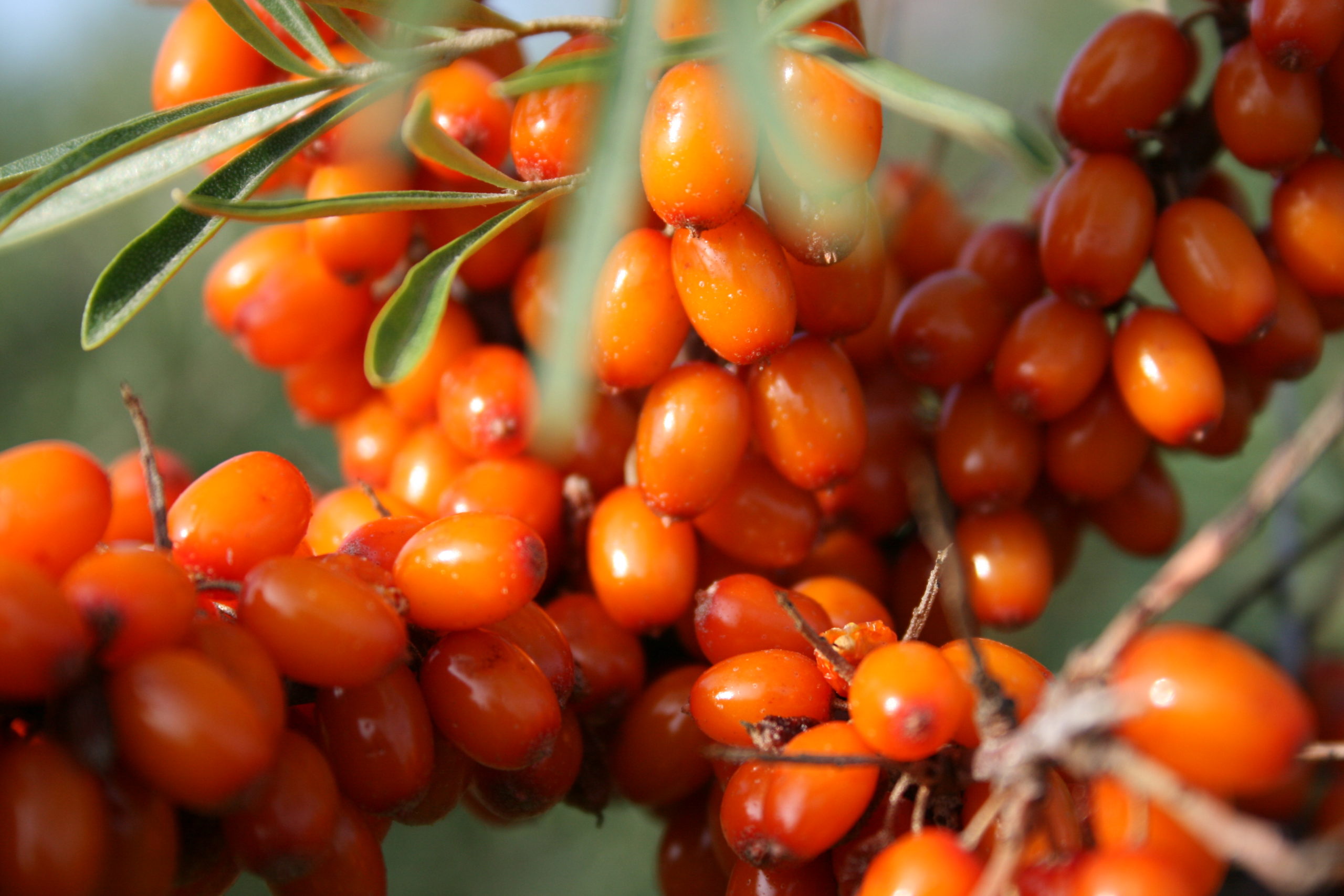The winter of 2018 has been a marked change from the norm of almost all the winters since we planted our first sea buckthorn plants in 2009. The norm up until now has been so mild that the Siberian plants have been emerging from dormancy in January. The variety Klaudia has always taken the lead, with the earliest having been December 31st.
This year however has been characterised not only by a week of dramatic snow this month, but also frosts through January and February. As a consequence even Klaudia decided that this was actually winter and finally only started to emerge on January 22nd. Growing any crop brings with it the issue that we have no control over the weather. It alters each growing season and that has an impact on the crop. Moving a plant from a country like Russia with its continental climate to the maritime environment we have at Devereux farm on the Essex coast was always going to bring with it an issue that the plants would need to adapt.
The principal first major event in the growing calendar is pollination. There were signs that our Siberian male plants where showing movement in the upper buds of the plant on February 23rd. The snow struck all through the following week, then thankfully it cleared, but as if to ensure that we did not forget it had happened a second dose came over the weekend of March 17/18. The relevance of all this is whether it will impact on pollination as some female varieties, particularly Sudarushka and Altaiskaya are not as forward with leaf development as some of the other varieties. As I write this now approximately 60% of the buds on the males are cracking open. This is a significant move from three days ago, so I suspect pollination might start towards the middle of next week.
On the basis that we had a good yield of berries last year the Siberian males (Gnom variety) have proven themselves to pollinate successfully. My concern though is that of all varieties they are susceptible to disease, and even fully mature plants die over a season.
Yesterday I attended a Soil Health seminar run by the Head of Horticulture at the Soil Association, Ben Raskin. As the sea buckthorn is registered as organic there are limitations to what one can and cannot use when controlling pests and diseases. One of the options discussed was biochar. This is charcoal enriched with beneficial fungi, bacteria and trace elements gained from seaweeds.
Part of the issue of growing trials is the need to find solutions to problems, and I need to find a way of supporting the health of my males. If the males are failing because of soil based pathogenic fungi then Biochar might help – so this will go on the list of work for this year.
The soil health seminar also focused on the use of different composts and woodchip mulches. The woodchip trials being both with composted and un-composted chip. Woodchip for our soil at Devereux will provide a great source of organic matter in a form that should improve the soil ecology, structure and nutrient content. Better soil will reduce stress on the plants and reduce the risk of disease. The other half of the reason to improve the soil is the hope that we can improve the availability of nutrients available to the plant that might increase the quality of the berries.
The nutrient quality of our berries is important as sea buckthorn is recognised as a “super fruit”. With this label it needs to maintain its capacity to contain higher than normal levels of vitamins, carotenoids and myriad of polyphenols that are the basis of its potential to deliver benefits. Omega 3 comes into this category – an important nutrient so often associated with fish oil, but now being increasingly provided through plant sources.
We always have to remember that like all crops, sea buckthorn is a natural product that is a product of the environment it grows in. Every year the weather is different and that will impact on both the yield and quality of the fruit. Soil management can help to reduce the variability of a crop and that is something we need to work on to deliver a consistent quality, good tasting fruit to customers.

